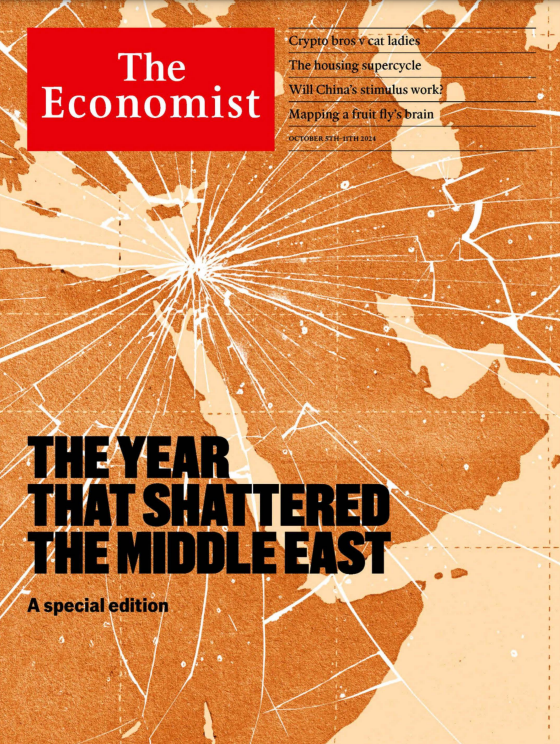
Download PDF Version Here For Free
The year that shattered the Middle East
Kill or be killed is the region’s new logic. Deterrence and diplomacy would be better
EVER SINCE Hamas’s slaughter of Israeli s on October 7th 2023, violence has been spreading. One year on the Middle East is an inch away from an all-out war between Israel and Iran. Israel’s skillful decapitation of Hizbullah, a Lebanese militia backed by Iran, prompted the Islamic Republic to rain missiles on Israel on October 1st. Israel may retaliate, perhaps striking Iran’s industrial, n1ilitary or nuclear facilities, hoping to end once and for all the threat it poses to the Jewish state.
Iran is certainly a menace, and use of force against it by Israel or America would be both lawful and, if carefully calibrated, wise. But the idea that a single decisive attack on Iran could transform the Middle East is a fantasy. As our special section explains, containing the Iranian regime requires sustained deterrence and diplomacy. In the long run Israel’s security also depends on ending its oppression of the Palestinians.
Iran1s latest direct attack on Israel consisted of 180 ballistic missiles. Unlike an earlier strike in April, this time Iran gave little warning. But as before. most of the projectiles were intercepted. The salvo was a response to the humiliation of its proxy, Hizbullah, which until two weeks ago \vas the most feared militia in the region. No one should shed tears for a terrorist outfit that has helped turn Lebanon into a failed state. For the past year Hizbullah has bombarded Israel forcing the evacuation of civilians in its northern belt. Israel’s counter-attack, unlike its invasion of Gaza, “vas long-planned. It has made devastating use of intelligence technology and air power, killing the militia1s leaders, includi11g its chief, Hassan Nasrallah maiming its fighters with exploding pagers and destroying perhaps half of its 120,000 or more missiles and rockets.
This humbling of Hizbullah has triggered a crisis of credibility for its sponsor. For three decades Iran has tried to intimidate Israel, Arab states and the West with a twin-track approach of threatening to race for a nuclear bomb arid organizing an ‘axis of resistance” a network of militias including Hamas Hizbullah and the Houthis in Yemen. Now that axis is reeling: Israel has battered Hamas’s military wing in Gaza and outwitted Hizbullah. Suddenly Iran’s regime look too weak to help its cronies-and, perhaps, to defend itself. Even its ballistic missiles are no match for Israel’s air defenses.